Flat frame calibration corrects optical imperfections in your deep-sky images. You’ll use these frames to eliminate vignetting (darkened corners), dust spots, and uneven illumination that diminish your final results. Capture them using a uniform light source with the same camera settings as your light frames, aiming for a histogram peak between 1/2 and 2/3. Proper flat frames serve as the foundation for scientifically accurate astrophotography, transforming good images into stunning cosmic portraits.
What Is Flat Frame Calibration In Deep-Sky Photography?
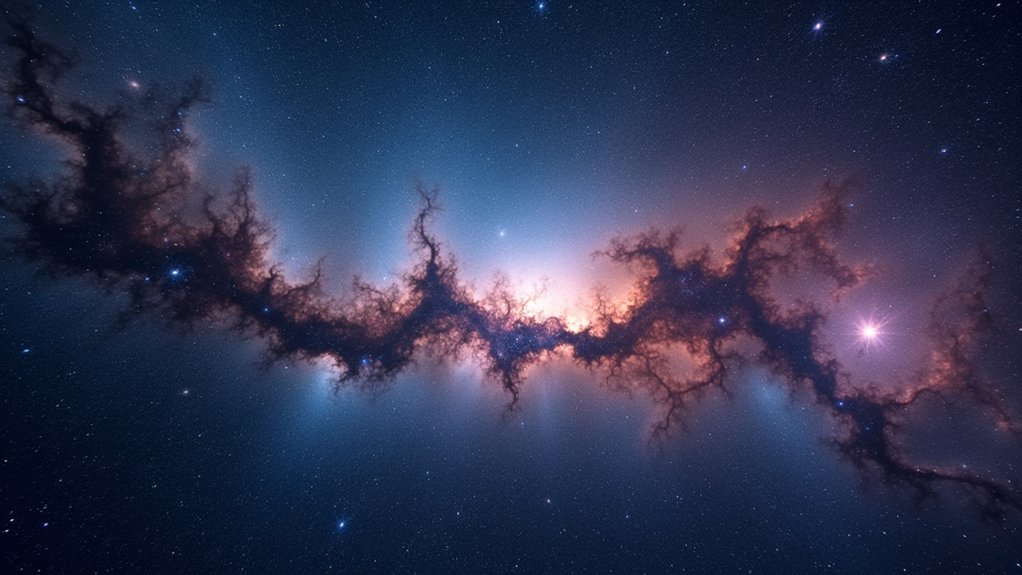
When you’re processing deep-sky images, flat frame calibration serves as a critical step that corrects various optical imperfections in your final photograph.
These calibration frames target issues like vignetting, dust spots, and uneven illumination that can diminish your image quality.
During your imaging session, you’ll capture flat frames using a uniform light source with the same ISO and exposure times as your light frames.
The goal is achieving a histogram peak between 1/2 and 2/3 from the left without saturation.
Your stacking software then applies these frames to eliminate artifacts in your image, dramatically improving signal-to-noise ratio and ensuring even illumination across the frame.
For ideal results in deep space astrophotography, stack multiple flat frames to average out random noise—this practice substantially enhances calibration accuracy and ultimately delivers cleaner, more scientifically accurate images.
Understanding the Purpose of Flat Frames in Astrophotography
Despite their often overlooked status, flat frames serve as the foundation for producing scientifically accurate and visually striking deep-sky images.
When you process your light frames, these calibration frames correct optical imperfections that would otherwise diminish your final result.
Flat field frames specifically address:
- Vignetting – the darkening that occurs at image edges due to optical path limitations
- Dust donuts – circular artifacts caused by particles on your sensor or filters
- Uneven illumination – inconsistent brightness across your field of view
- Filter inconsistencies – variations in transmission across specialized astrophotography filters
How to Capture Effective Flat Calibration Frames

Capturing high-quality flat frames requires careful attention to your imaging workflow and setup consistency. Keep your camera’s orientation and focus identical to your light frames, ensuring your flat frames accurately correct for the same optical imperfections.
Use an even illumination source like a light panel, positioning it to uniformly cover your telescope’s aperture. Aim for histogram readings between 1/2 and 2/3 for ideal exposure settings. For a monochrome camera, take separate flat frames for each filter you used.
Don’t delay—capture flats immediately after your imaging session before dust patterns change. Follow up with dark flats using matching exposure settings but with the lens cap on.
These help eliminate noise from your Master Flat, which, combined with your dark frames and bias calibration, will dramatically improve your final images.
Integrating Flat Frames Into Your Processing Workflow
After you’ve successfully captured your flat frames, incorporating them into your processing workflow requires careful attention to detail and proper calibration techniques.
Make sure your flat frames match the ISO/Gain settings used for your light frames to maintain consistency throughout your deep-sky photography calibration process.
For best results during integration:
- Collect 25-50 flat frames per imaging session to effectively reduce the noise
- Check that your histogram peak falls between 1/2 and 2/3 from the left for proper exposure
- Create a Master Flat by stacking your individual calibration frames
- Consider taking Dark Flats immediately after your flats if amp glow is present
Remember that proper integration of these calibration frames will greatly improve your final image by eliminating vignetting and dust spots that would otherwise detract from your deep-sky targets.
Common Flat Frame Challenges and Troubleshooting
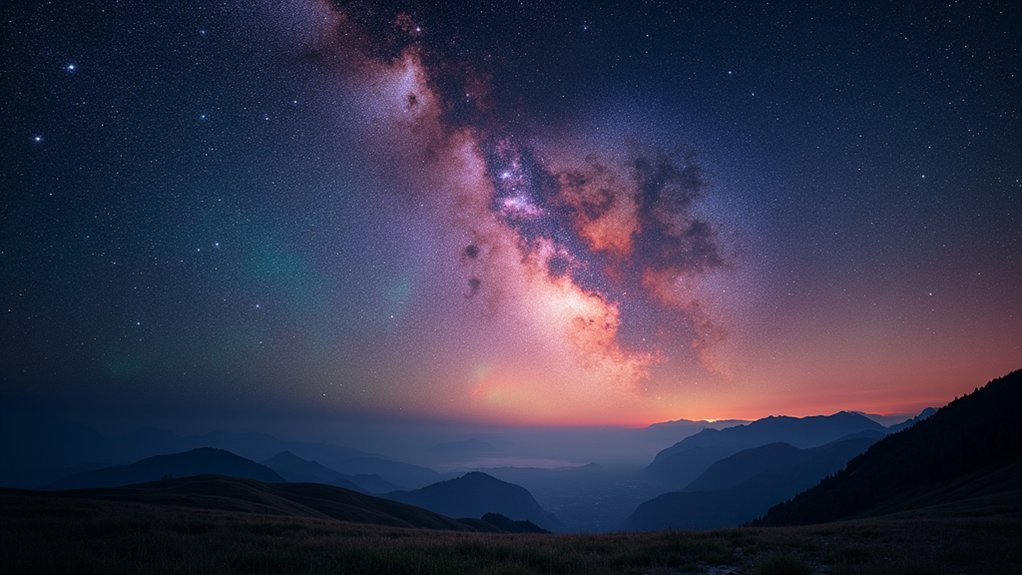
Even when following proper techniques, flat frames can present several challenges that frustrate astrophotographers. Achieving uniform lighting conditions can be difficult, especially when environmental factors change during your imaging session.
Your exposure settings must be precise—aim for a histogram that’s 1/2 to 2/3 from the left to avoid calibration challenges later.
You’ll sometimes notice persistent dust artifacts despite your best efforts. Don’t immediately blame your sensor; the issue might require more consistent flat frame captures or better technique.
If you’re using Dark Flats, remember to capture them immediately after your flat frames with identical settings.
Non-linear sensor responses can complicate your Master Flat creation, particularly at extreme brightness levels.
When troubleshooting flat frame issues, also check whether your camera orientation changed between imaging and calibration—a common photography troubleshooting oversight that renders your flats ineffective.
Frequently Asked Questions
What Do Flat Calibration Frames Do?
Flat calibration frames correct uneven illumination and vignetting in your images. They’ll remove dust spots, enhance image quality, improve signal-to-noise ratio, and eliminate artifacts from your sensor, making post-processing easier and your final images cleaner.
What Is the Best Exposure for Flat Frames?
The best exposure for your flat frames should place the histogram peak between 1/2 and 2/3 from the left. You’ll want to maintain the same ISO and gain settings as your light frames.
When to Take Flat Frames?
Take flat frames immediately after your light frames while your equipment is still in the same position. This guarantees you’ll capture the same dust patterns and optical characteristics that affected your images.
What Is a Flat Frame?
A flat frame is a calibration image you’ll capture using a uniform light source. It records optical imperfections like vignetting and dust spots, helping you correct these issues in your astrophotography processing workflow.
In Summary
You’ve now mastered the essential skill of flat frame calibration in your deep-sky imaging workflow. By properly capturing and applying these frames, you’re effectively eliminating vignetting, dust spots, and uneven illumination from your images. Don’t skip this critical step—it’s the difference between amateur-looking photos and professional-quality astrophotography that truly showcases the beauty of the cosmos you’ve worked so hard to capture.
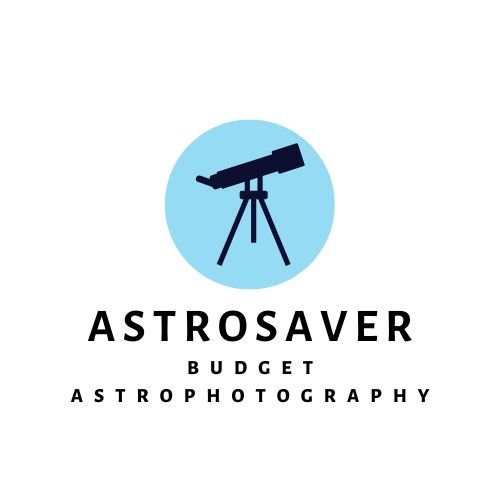

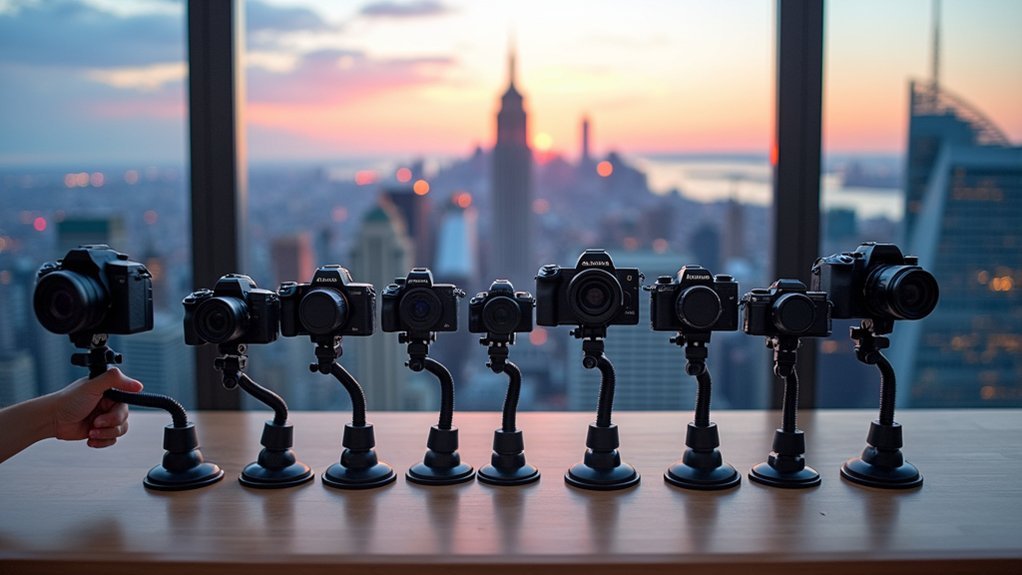
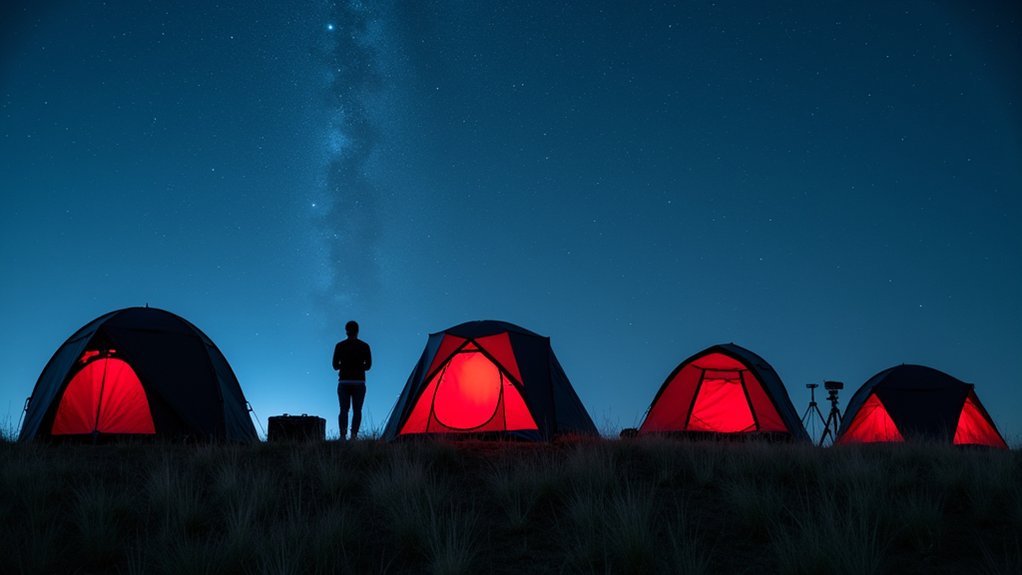
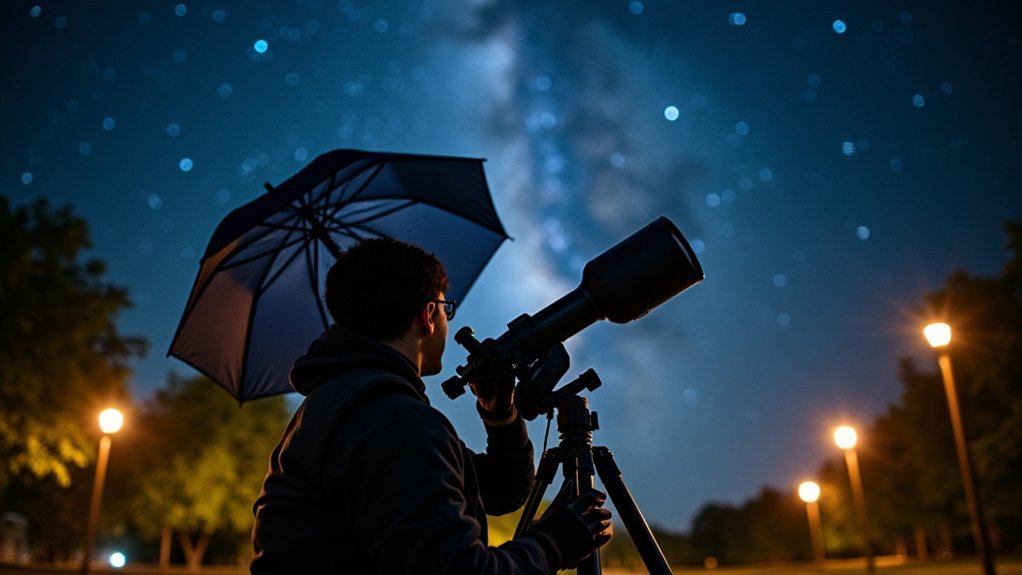
Leave a Reply